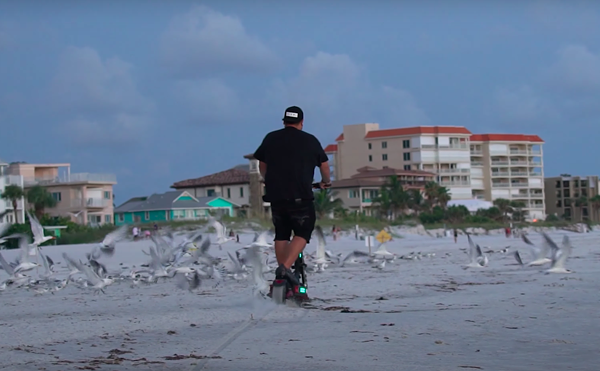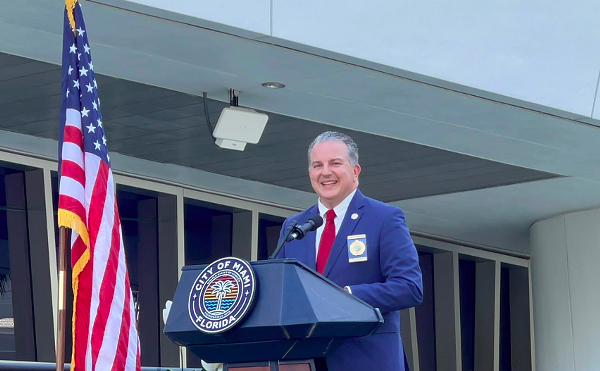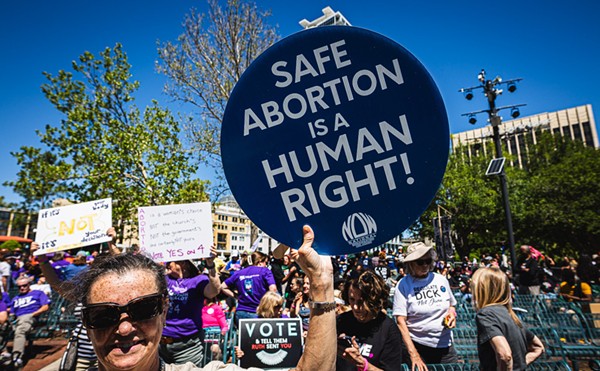No one doubts that when Ed Turanchik finishes sulking, he and his associates at Civitas will have another go at turning one of Tampa's worst public housing projects into a latte-drinking, neighbor-loving urban paradise called Central Park. After all, some wealthy and powerful people now own land in the area, and it will be worthless if they don't make at least a facsimile of his vision happen.Media pundits, black community leaders, even some project dwellers have declared the Central Park project a good thing, in theory, and encouraged Turanchik to continue on his noble path.
The whole thing sounds so good. I want to believe that the people who have been secretly buying up property in the project area care about elevating the lives of poor people, and that this development will turn a squalid, hopeless, dangerous place into a beautiful neighborhood where people of all socioeconomic levels and races live together in peace, safety and prosperity.
But I have my doubts.
This isn't the first time developers and city officials have proposed a plan to redevelop that very same area, ostensibly to help the folks who live there. Those plans created as many problems as they solved — in some cases more.
Now that we have some time to think before we leap, it's worth examining the failures of those programs so we know what questions to ask next and how to make sure future redevelopment efforts work for everyone.
Anthropologist Susan Greenbaum has studied the history of the Central Park area and the effects of similar redevelopment efforts in other parts of the city. She has no stake in either selling or derailing the Civitas project. Her goal is to document and understand past problems so that we don't keep making the same costly mistakes.
The biggest problem concerns the effects of the project on the people who live in the redevelopment area now — those people everyone professes to care about so much but who are also in the way of developing this potentially very valuable property.
In her book More Than Black, Greenbaum recounts an attempt in the 1920s to relocate the black people in that section of town, then known as The Scrub, to a special subdivision that would be way better than the homes they were then living in. The plan was abandoned — or at least deferred — after the Tampa Urban League organized resistance to it.
Thirty years later, a federal program called Urban Renewal accomplished what the earlier attempt had not. Amid declarations of intent to improve the living conditions of poor black people living in the area, their homes were bulldozed. "Displaced residents had been promised that new houses would be built in the neighborhood, so they could move back and restore their lives," writes Greenbaum. Instead, many were relocated to Progress Village, a development outside the city. "Construction delays, failed promises about transportation and infrastructure, and hostile neighbors (this section of the county was dense in Klan members) contributed to the unattractiveness of the new neighborhood," writes Greenbaum. "It was also situated next to a phosphate mine whose stack of mildly radioactive slag grew by degree into a mountain that looms over the playground of the Progress Village School."
A wasteland of abandoned buildings, empty lots and subsidized housing projects replaced The Scrub, which although poor, had at least been a place where people knew their neighbors, had access to goods and services, and weren't afraid to walk down the street or let their kids play outside.
Next came Hope VI, a federal program designed to break up concentrations of poverty, crime and urban blight. Hope VI provides funding to demolish public housing projects and — in partnership with private enterprise (such as Civitas) — replace them with mixed-income housing. Some residents of the demolished projects are given opportunities to live in subsidized apartments or even in some cases buy homes in these new developments. Others are given Section 8 vouchers that would pay a portion of their rent in the private sector.
Dr. Greenbaum and her research team have been tracking and interviewing people displaced by Hope VI-funded demolitions of Tampa housing projects, including College Hill, Ponce de Leon and Riverview Terrace.
She found that one-fourth of the people moved out of demolished projects ended up in other housing projects. Some moved from College Hill and Ponce to Riverview Terrace, and then to Central Park Village when Riverview was demolished, experiencing the problems of dislocation twice. Another quarter, she says, have been lost altogether. Some probably ended up in homeless shelters or on the streets; others may have moved in with family or friends, found their own housing or left the area entirely.
A sizeable number got Section 8 vouchers, which present their own problems. "If you get them, you can't always use them," says Greenbaum. "You have to find a place within 30 days." And there simply isn't enough affordable housing to accommodate all the people who need it. "Some people lost their vouchers and were evicted because of background checks" that turned up things such as bad credit, she says. "It's hard to establish a credit rating with zero income."
The new mixed-income housing developments have stiffer criteria for admittance than the old housing projects. Only 50 of the original 1,500 families displaced to build the new Belmont Heights Estates (formerly College Hill Homes) are now living there, says Greenbaum. That's less than 4 percent. Strict rules govern those residents' lives and hold the constant threat of eviction over their heads.
They are required to have a job or be in training, says Greenbaum. Their homes are subject to housekeeping inspections, they must register all guests in advance, and restrictions are placed on where they are allowed to gather with family and friends. If their children get into trouble, the whole family can be thrown out. A mother (or grandmother) who loses her job or has problems with a child — as nearly every parent does at some point — also stands to lose her home when she most needs stability. It's a quick trip to living on the streets.
The other major problem of displacement is the stress placed on the neighborhoods where the displaced end up. Neighborhoods such as east Tampa, Sulphur Springs and Suitcase City are the few remaining places where the working poor can still find affordable housing, and they are already stressed by the influx of people displaced by earlier Hope VI projects.
Each new Hope VI project helps the top tier of public housing inhabitants — the elderly, the employed and employable people whose needs for assistance to break the cycle of poverty are comparatively minimal. The others are dispersed to increasingly scarce public housing projects and private sector low-cost housing. Some will end up on the streets; others will go to already declining neighborhoods, creating further problems for those neighborhoods and losing the comparatively easy access to services they had in housing projects.
There is a federal law requiring developers of large tracts to commission social impact studies, says Greenbaum. But HUD exempts housing authorities and developers working on Hope VI projects from doing the studies. "They should do them anyway," says Greenbaum. "Then they would understand the effects and the problems and make a better plan." She's willing to help. But no one has asked her. In fact, she called the mayor to offer her assistance in assessing the Civitas project. But she has yet to be granted an audience.
If Ed Turanchik really cares about making this city a better place and helping the poor, as he says he does, he should prove it by taking a careful look at the potential problems his project could cause, and coming up with a detailed plan to address them before again requesting funds and concessions from city, county and federal agencies.
A social impact study would not be terribly costly, says Greenbaum, and "It would save a lot of money and hardship in the long run."
Contributing Editor Susan F. Edwards can be reached at [email protected].















